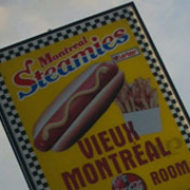In my spare time I’ve been starting to read again, including Zenko and Bogost’s Racing the Beam. Their discussion of the Atari game “Adventure” raised a question for which I do not have the answer. Are there examples of “easter eggs” in academic writing? What would they be? I have a vague recollection of a Judith Butler footnote where she cites a conversation she had with Donna Haraway in a hot tub (or perhaps it was the other way around? I may have the wrong people but I lack the motivation to go find it). But surely there must be more elaborate examples of scholarly easter eggs.
Comments are closed.

Depends on what you mean, I think. I dunno what the scholarly equivalent of a classic software easter egg would be when it comes to the arcane and wholly unpredictable manipulation of the object necessary to reveal the hidden gem. Something like: turn the book upside down, remove pages 61-66, scribble “Derrida” in the margins of page 92 … and the spine of the book will open to reveal a fully functional version of Tetris? Not likely.
On the other hand, if you mean bits of prose dropped in that add nothing but whimsy to the main text? Try Elvis After Elvis, chapter 4, endnote 46.
🙂
This is an intriguing concept, and a few things come to mind, though I’m not sure if you can call them Easter Eggs as much as similar along certain dimensions. One element that may be similar is using hooks from specific but non-referenced material to add a certain angle to what you are writing, like a turn of phrase from Althusser (e.g., “always already”) that dropped in evokes if not the content of the earlier reference then its sense and flavour. This is easter egg—like in that if you know what to look for you might see an extra element. Or you could have fun with footnotes, like in the old text-based Hitchhiker’s Guide game where there were hints and footnotes that were sometimes self-referential, or not referenced at all so you would old find them if you just searched through each note individually as opposed to as part of the game. I sometimes use footnotes in odd ways, though now I am tempted to add in the odd extra one without any reference in the text itself… (though good luck getting that by overzealous editors…). You could do it more easily with embedded links I suppose. Then there are academic performance art projects like BIOTEKNIKA that pretended to be a biotech firm website with the academic deconstruction of that industry hidden behind a nest of links. Maybe you could print a book with a few pages on the special paper that is meant to foil photocopiers, but instead of watermarking them with ‘VOIDS’ they could be laced with messages specifically made for students… You have planted a sinister seed here… 🙂